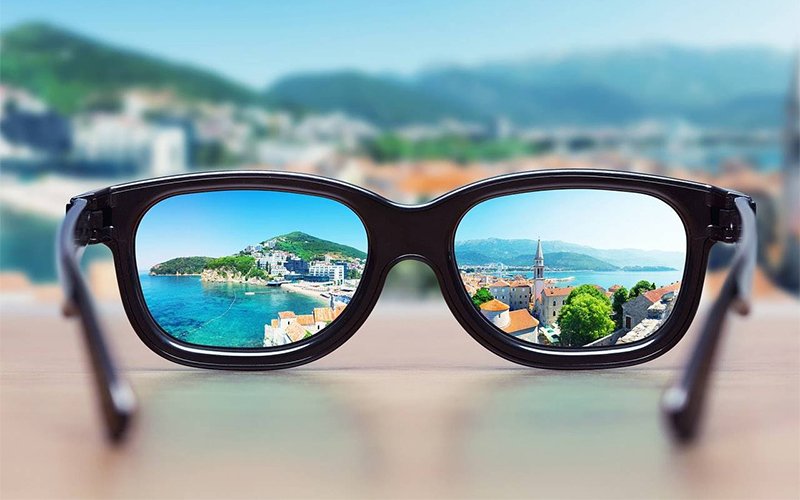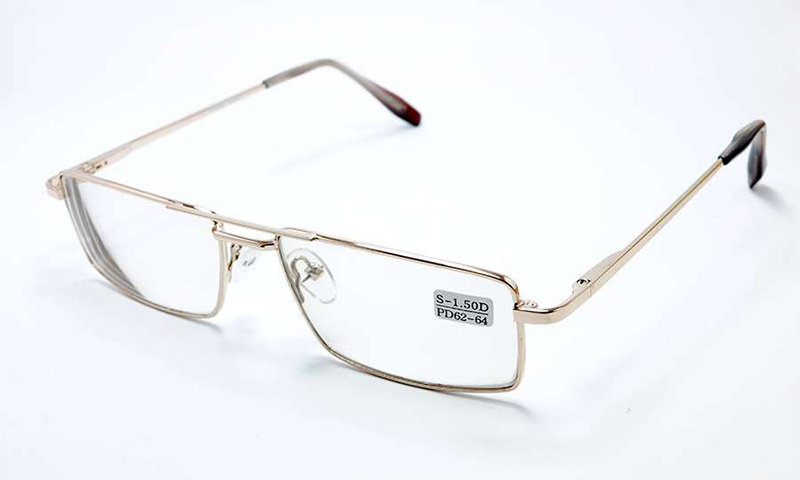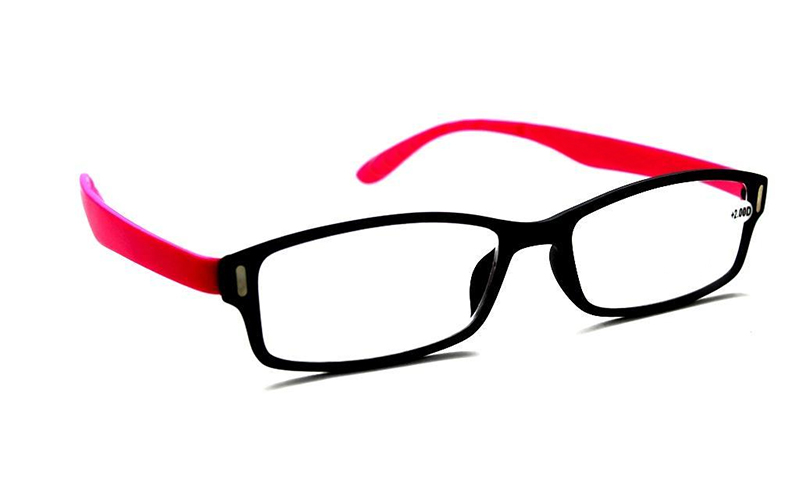It is the eyes that serve as a tool for obtaining the main part of information about the world around us. But unfortunately, this important organ is very often subjected to various diseases, which causes clear vision and inconvenience, along with discomfort. Because of this, a large number of people are forced to wear glasses with diopters daily. Imperceptibly, they become an indispensable object, without which it is already difficult for a person to manage. But not everyone knows how to choose glasses in order not to cause additional harm to eye health. About how not to make a mistake, tell our today's leadership.

Content:
Best eyewear manufacturers - which company to choose
When choosing glasses for vision it is very important to determine the manufacturer. There are many companies in the domestic market with many years of experience in the manufacture and production of similar products.
Typically, such firms have their own technology and patents, and all their products are subject to strict quality control. The more funds invested in development and innovation, the higher the guarantee that a consumer will receive a modern and safe product.
Here are some popular brands:
- Carl Zeiss;
- Essilor;
- Rodenstock;
- Hoya;
- Seiko.
Eyeglasses should be ordered exclusively in specialized places: pharmacy departments, optics salons, etc. You should look to make them strictly according to the prescription you have.
There you can also buy ready-made glasses. Any products sold in the markets, in the subway crossings, street trays should be suspicious. These outlets are not intended to sell branded products. Cheap options come here usually from Asian countries and are made using low quality materials.
Readers who are currently interested in finding a particular model are invited to go to our rating of the best points for sight.
The principle of operation and the device points with diopters

Glasses with diopters - is a complex optical device, selected individually for each. Initially, you should contact an ophthalmologist. Only after a comprehensive survey and identification of problems, you can go shopping.
If the glasses for vision are selected incorrectly, then the occurrence of headaches, fatigue, impaired performance, permanent eye fatigue and a gradual deterioration of vision are not excluded. Even if you already own glasses, you should still go for a consultation before acquiring new ones, as over time, visual acuity changes.
Points consist of the lenses fixed in a special frame frame. The frame is very important, as it ensures their correct position before the eyes. The main parts of the rim are: temples, giving the correct position on the face; a bridge (bridge) connecting two light openings that evenly distributes the load and is responsible for maximum fit.
Glasses with diopters, where the lenses give a high clarity of vision on one of the eyes, with a general look, cause discomfort due to too much "sharpness". To prevent this from happening, it is imperative that you wear glasses to assess your condition for a while.
If they are meant to be given, the doctor will suggest looking at the maximum distances, in computer - to study the text on the monitor screen, for reading - in a book, magazine, newspaper.It is necessary to describe to the doctor all the sensations, only then it will be possible to achieve maximum convenience.
Types of glasses with diopters
Glasses with mineral (glass) lenses

Mineral lenses are made from special brands of glass. To produce them is much cheaper than, for example, plastic. In this case, glasses with such lenses, regardless of the operational period, have almost no scratches on the surface, do not grow cloudy with time, and therefore retain excellent transparency.
True, they are not recommended for products intended for children and athletes, because of the fragility of the eye can be injured.
Advantages:
- do not scratch;
- high level of transparency;
- democratic price.
Disadvantages:
- fragile;
- low degree of injury safety;
- relatively large weight;
- the inability to use in poluobodkovki, bezbodkovki and some other frames.
Glasses with polycarbonate (plastic) lenses

More modern and safe are polycarbonate lenses. They are impact resistant, therefore, recommended for use in children, athletes, motorists. Their weight is 30% less than that of glasses made of glass, so they are practically not felt in the sock.
They can be painted in various shades, have several layers of coating. But according to the properties of optics, lenses are inferior to glass, and this is one of the most important parameters of any glasses for vision.
Advantages:
- resistant to splitting;
- low weight;
- protect from UV rays;
- may have complex geometry (aspherical lenses).
Disadvantages:
- have a short life;
- easy to scratch;
- absorb moisture;
- low optical properties;
- expensive production.
Parameters for selecting points for vision

Lens shape and number of optical zones
1. Single focal. Spherical simple lenses, considered a classic.
2. Aspherical. Due to the special geometric shape, such lenses are distinguished by subtlety and greater aesthetic appeal. They do not distort the side image and provide high clarity of view.
3. Lenticular. Also lighter and thinner. Great for lenses with large plus diopters.
4. Monofocal. Have one optical zone. The entire surface of the lens has the same diopter power.
5. Bifocal The top is a zone for a distance, and the bottom is for a close distance. Separated zones are clearly visible line. The use of such lenses allows you to abandon the second pair of glasses, and at the same time see far and close.
6. Trifocal. Three zones: upper - for distance viewing, medium - for medium distances, lower - for neighbors. Here the borders are also clearly visible on the surface of the glasses. Designed to work in the office, but use them in open spaces and while driving is prohibited.
7. Progressive. I have two zones, as well as bifocal, however, the transition from zone to zone on the surface is not visible. Externally, they resemble single-focal, but this type is a modernized version of bifocal lenses.
Light transmission coefficient
1. Photochromic. These are the so-called chameleons, capable of changing transparency under the influence of sunlight. The advantage of such lenses is versatility. They allow you to work indoors, as they remain transparent and perfectly protect the eyes from UV rays in bright daylight. Moreover, it is important that they are darkened gradually, and this favorably affects the eyes.
2. Painted Colored lenses can have any shade. Designed to be worn in sunny weather. Especially recommended to motorists, athletes, fishermen and other people who are in conditions where the rays glare and reflect off surfaces, interfering with vision. It is impossible to constantly be in such glasses, as eye strain may appear.
Special topcoat
Coverage is selected depending on the purpose for which points are acquired.
1. Hardening allows you to extend the life of plastic lenses.
2. Anti-glare reduces the reflection of light from the surface, so that the interlocutor will always be able to see your eyes, and not reflected reflections.
3. Water and dirt-resistant prevents sticking of water droplets, dirt, dust to the surface of the lenses.
4. Multifunctional coating combines all of the above and is multi-layered.
Rim material
Frames are usually made of metal, plastic, or a combination of these two materials.
1. Metal frames are durable, aesthetic and lightweight. Usually it is titanium, copper-nickel alloy, aluminum and stainless steel. Glasses with a similar frame stand out a little on the face, look neutral and fit most styles. By hypoallergenic are pure titanium and stainless steel.
2. Plastic is also durable, lightweight and better hold the lenses. True, they break down much more often than metal and over time the color is able to fade due to exposure to ultraviolet radiation. Usually plastic frames are used in glasses with thick lenses to make them less prominent.
3. Combined combine the advantages of both materials.
Rim designs
Depending on the design features of the frame can be divided into the following types:
1. Headband. Have around the perimeter of the lenses whole frame. Well fix all, without exception, lenses, especially glass.
2. Semi-rimless and rimless glasses have gained popularity relatively recently and as such do not have rims. In the first case, the lenses are fixed using special mounts and nylon fishing line, and in the second - the arms are screwed into the holes on the screws. Such glasses may only have plastic lenses.
General recommendations
1. Make sure that the side edges of the glasses for vision are in line with the face. If the rim protrudes behind the cheeks, then their visual reduction will occur, which is not always good.
2. The frame should not go far beyond the line of the eyebrows, and the bottom - to touch the face.
3. Glasses with diopters with strong farsightedness visually increase the size of the eyes, highlighting all the wrinkles. Smooth it will help aspherical lenses with a small tint.
4. The frame must exactly match the size of the face.
5. So that the nose does not look short, the arms should not have a low fit.
What glasses for vision choose

1. Glass glasses are inexpensive, have excellent optical properties and a long service life. We recommend them to most people with vision problems.
2. Plastic is best to buy for children, athletes, motorists and other users who are in conditions where the risk of breaking points is high.
3. Choose aspherical or lenticular lenses with glasses, as they are thin, light and aesthetically appealing.
4. Eyeglasses with monofocal lenses are ideal for people who require correction of myopia or hyperopia.
5. Attention should be paid to progressive lenses with glasses in case you work with your eyes at different distances during the day.
6. Trifocal lenses with glasses are ideal for office work, for example, a dentist, a manager and others.
7. It is worth choosing glasses with photochromic lenses so that your eyes are less overstrained.
8. Eyeglasses with colored lenses will be an excellent option for motorists, anglers, people involved in water sports.
9. Prefer glasses in which the lenses have a multifunctional coating.
10. Choose metal or composite frames, because they are less prone to breakage.
11. Eyeglasses with rim frame design is much more reliable.
How much are glasses for sight

1. Glasses with glass lenses will cost you approximately 2-5 thousand rubles.
2. Glasses with plastic lenses will cost a little more. From 4-7 thousand rubles.
3. Metal frames at the glasses for vision affect the price, such a product can be purchased for 5-10 thousand rubles.
4. Glasses with diopters from world-famous designers will be released in approximately 15-30 thousand rubles.
It will be interesting to friends too










